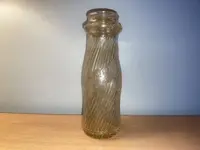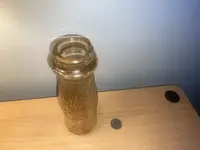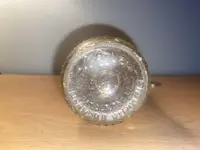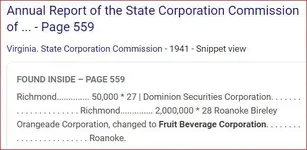Nathan6309
Full Member
- Joined
- May 15, 2018
- Messages
- 206
- Reaction score
- 701
- Golden Thread
- 0
- Location
- Botetourt County, Va
- Detector(s) used
- Garrett AT Pro, Garrett Ace 350, Macro Siplex +
- Primary Interest:
- All Treasure Hunting
I was metal detecting an old creek that now intersects through a public park. In one of the slow-moving parts of the creek, I found this bottle next to a broken orange crush in the clear variant. It says “Fruit Beverage Corp.” on the upper portion of the label and “Its not carbonated” on the bottom. It has a very strange top that is almost reminiscent of some sort of milk bottle. It also has writing on the bottom, including a very faint name that looks like “DALCO.” The bottom also says Roanoke, Virginia and has some illegible patent numbers on it. Before I had read the label, I thought it was some sort of chocolate milk bottle. Any internet searches have been fruitless, so I am at a dead end on this one. Anybody have an idea as to the history behind this bottle or the company that made it?











 Since I found a bottle dump, I haven't turned one of my detectors on this year! The bottle hobby grabs ahold of you
Since I found a bottle dump, I haven't turned one of my detectors on this year! The bottle hobby grabs ahold of you 